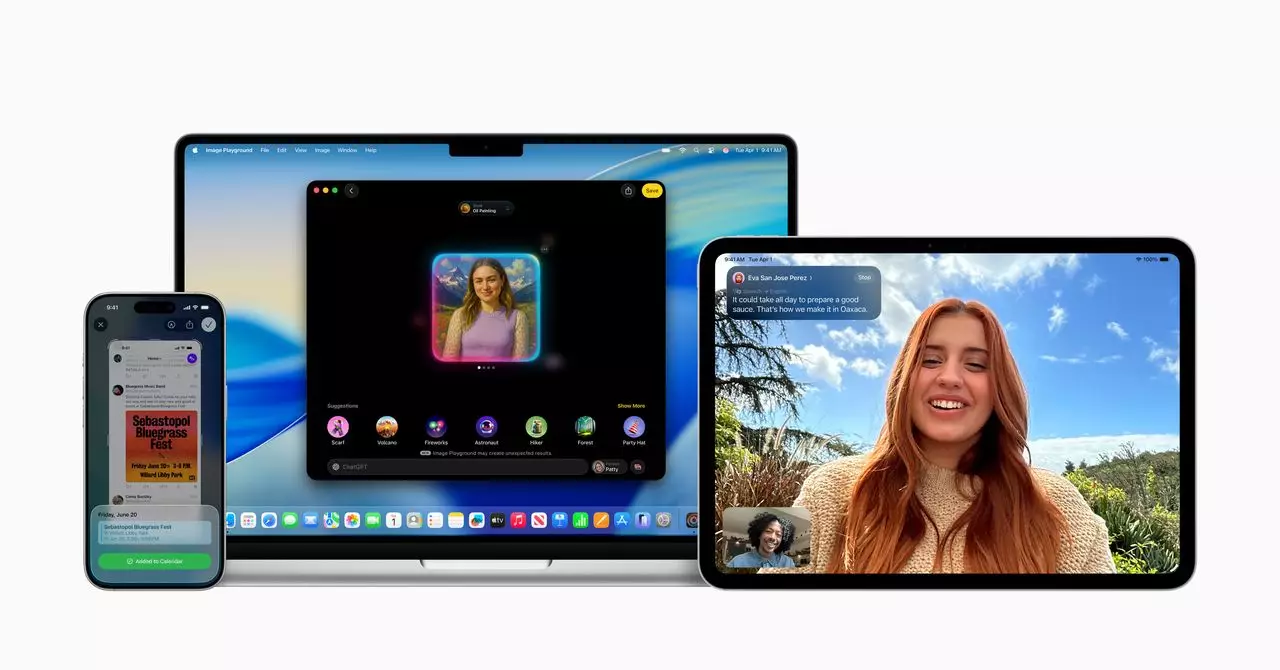At the recent Worldwide Developers Conference (WWDC), Apple unveiled an array of features that incorporate artificial intelligence (AI) into its devices, including the iPhone, Mac, and Apple Watch. While these advancements demonstrate Apple’s commitment to integrating AI into their product ecosystem, the company’s approach notably contrasts with the more audacious strides made by tech giants like Google and OpenAI. The incremental nature of Apple’s innovations raises questions about the effectiveness of their strategy in a fast-paced technological landscape.
The star of Apple’s AI showcase was the new Live Translation feature, designed to facilitate real-time translation during phone and FaceTime calls. This function indeed holds potential; however, it reveals Apple’s somewhat cautious approach, focusing on practical applications rather than groundbreaking technologies. This trend continued with the introduction of Workout Buddy, a voice-powered assistant that motivates users during physical activities. Such features may enhance user experience but lack the innovative depth that could set Apple apart in a market driven by drastic advancements and complex capabilities.
Foundation Models: The New Frontier for Developers
Another significant aspect of Apple’s announcement was the introduction of the Foundation Models framework, which allows developers to leverage AI without necessarily possessing an in-depth knowledge of machine learning. This move to democratize AI among developers is strategic, given Apple’s substantial developer community. Analysts suggest that making AI models accessible can position Apple closer to competitors who have historically unveiled more powerful AI capabilities.
Francisco Jeronimo from IDC noted that by inviting developers to engage with AI tools, Apple could cultivate a comprehensive ecosystem that fosters creative innovations. Yet, as much as this is a step forward, it is still a response to a landscape that is rapidly evolving. Apple’s current AI offerings might not match the sophistication of OpenAI or Google, and the company appears to be struggling to keep pace with the groundbreaking advancements witnessed in the sector.
The Balance of Innovation and User Satisfaction
One of the most significant challenges facing Apple is maintaining the delicate balance between introducing revolutionary AI features and preserving its loyal user base. According to Paolo Pescatore of PP Foresight, the consumer market has yet to demonstrate a strong alignment with AI-driven capabilities when selecting smartphones. Let’s face it: Apple’s customers expect cutting-edge, faultless innovations, and any mishap or overly ambitious feature could risk frustrating its existing clientele.
With this in mind, Apple’s deliberate approach can be interpreted as a strategy not just to innovate but to sustain user trust and satisfaction. Innovations like visual intelligence enhancements and tools for automating tedious tasks reflect the company’s understanding of user needs. However, the concern remains that this slow rollout could alienate users who are increasingly drawn toward more innovative devices from rival companies.
Competing in an Evolving Landscape
While Apple’s strategies signal an intention to ramp up its AI functionality, the conversation around its capability to compete with tech titans comes into play. Competitors like Google have already showcased advanced AI that can understand and interact as a human would, demonstrating a sharp distinction between their offerings and what Apple currently provides. The company needs to evolve rapidly to prevent falling behind in a market where AI is not just an enhancement but a transformative force.
Yet Apple boasts an advantage: its AI operates primarily on personal devices, a factor that enhances user privacy and mitigates costs associated with cloud services. The Private Cloud Compute initiative is a strategic move to maintain user trust while still offering developers robust tools. However, as the competitive landscape shifts at breakneck speed, Apple must initiate bold moves that leverage these strengths to redefine the user experience fundamentally.
In the realm of AI, the exploration of how these technologies can reshape personal computing remains vast and ripe with opportunities. While Apple has made initial steps to engage users with AI-powered features, the urgency to innovate and reinvigorate its product offerings has never been clearer. As we look ahead, the question remains: will Apple’s cautious approach yield the transformative impact it seeks, or will it miss the AI revolution entirely?


Leave a Reply